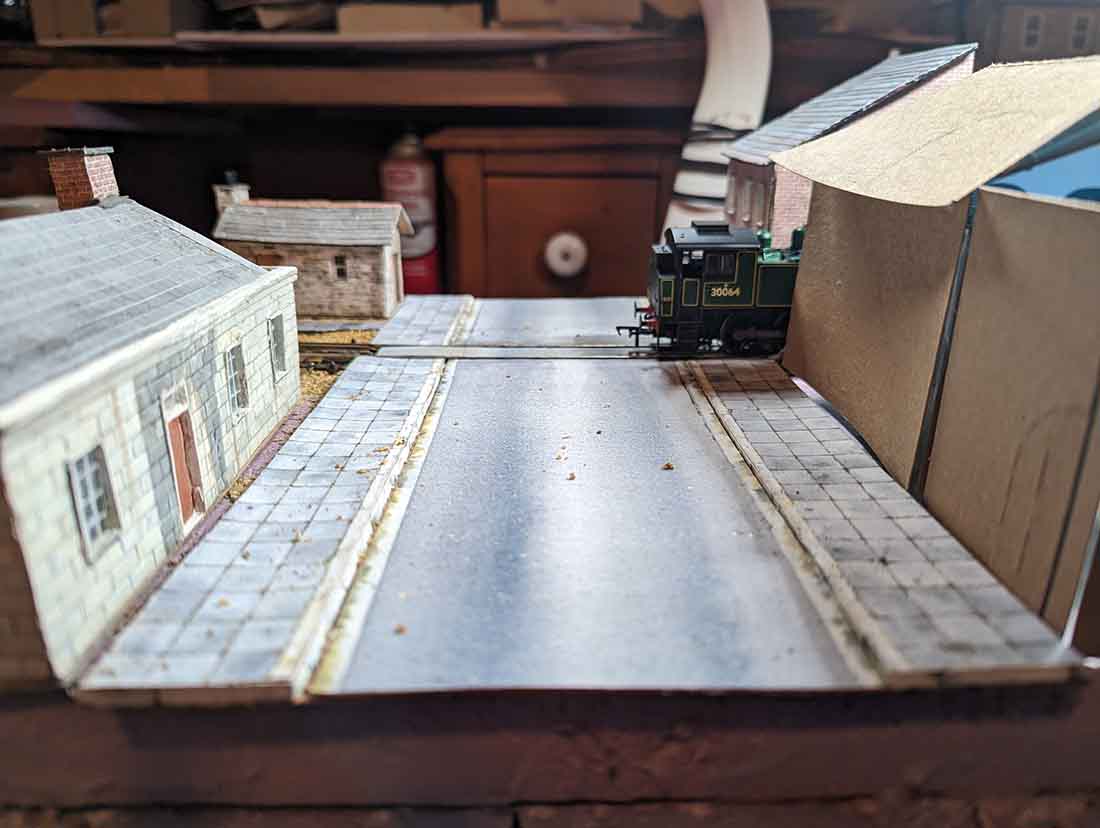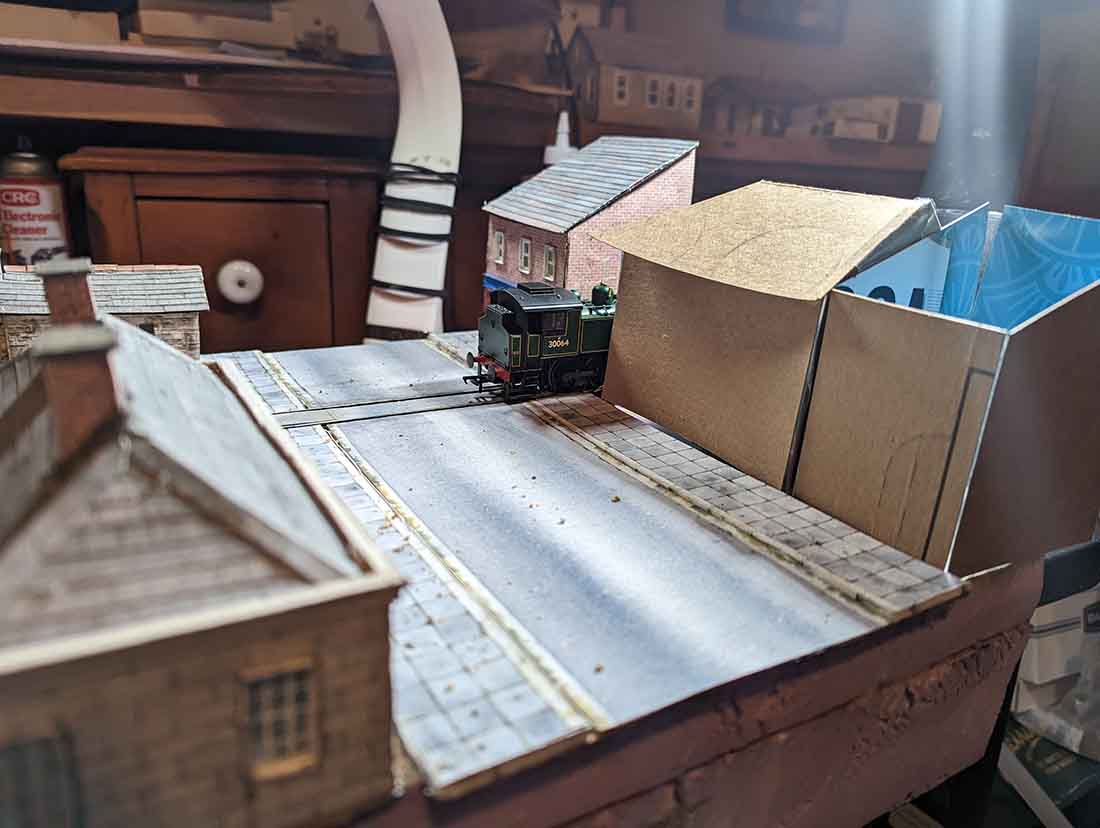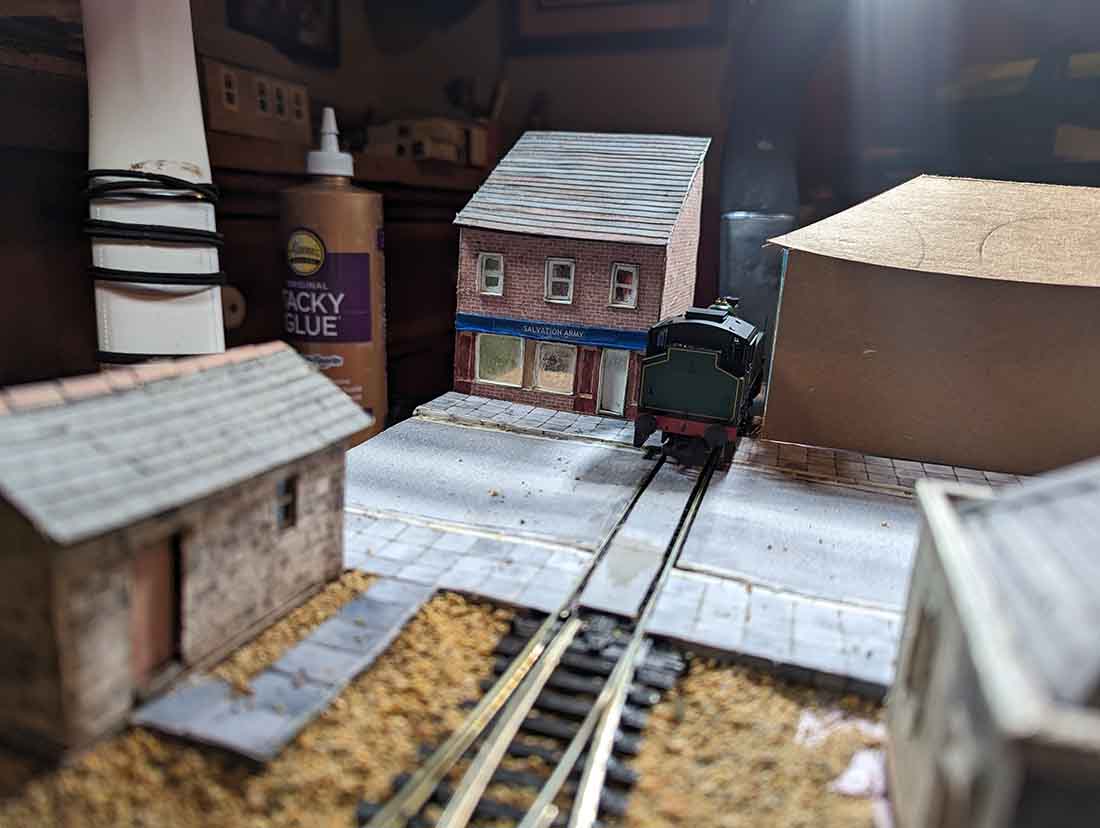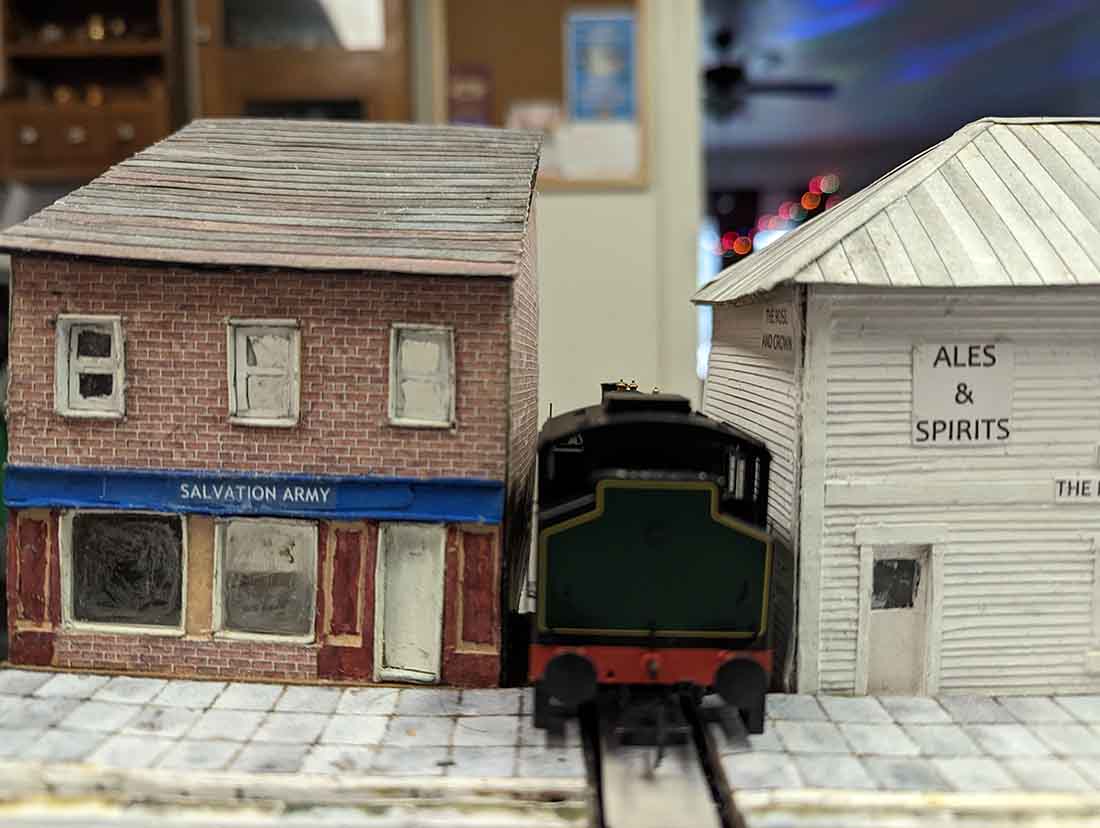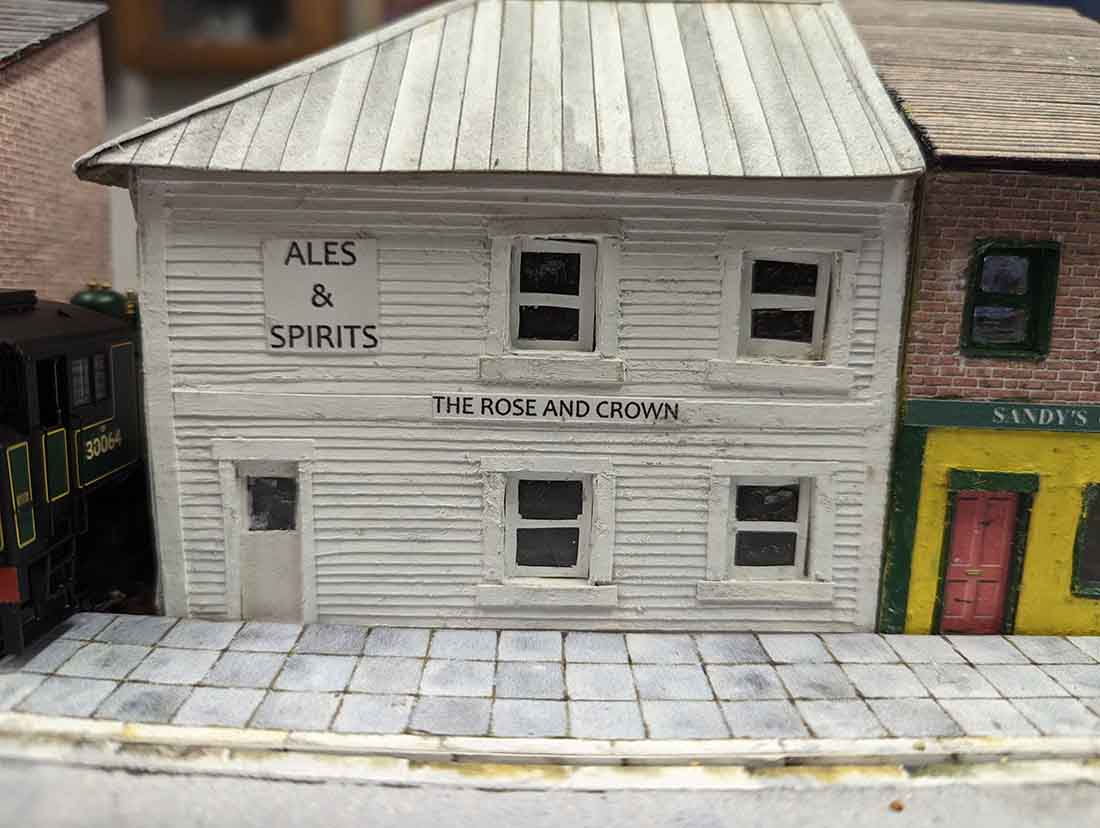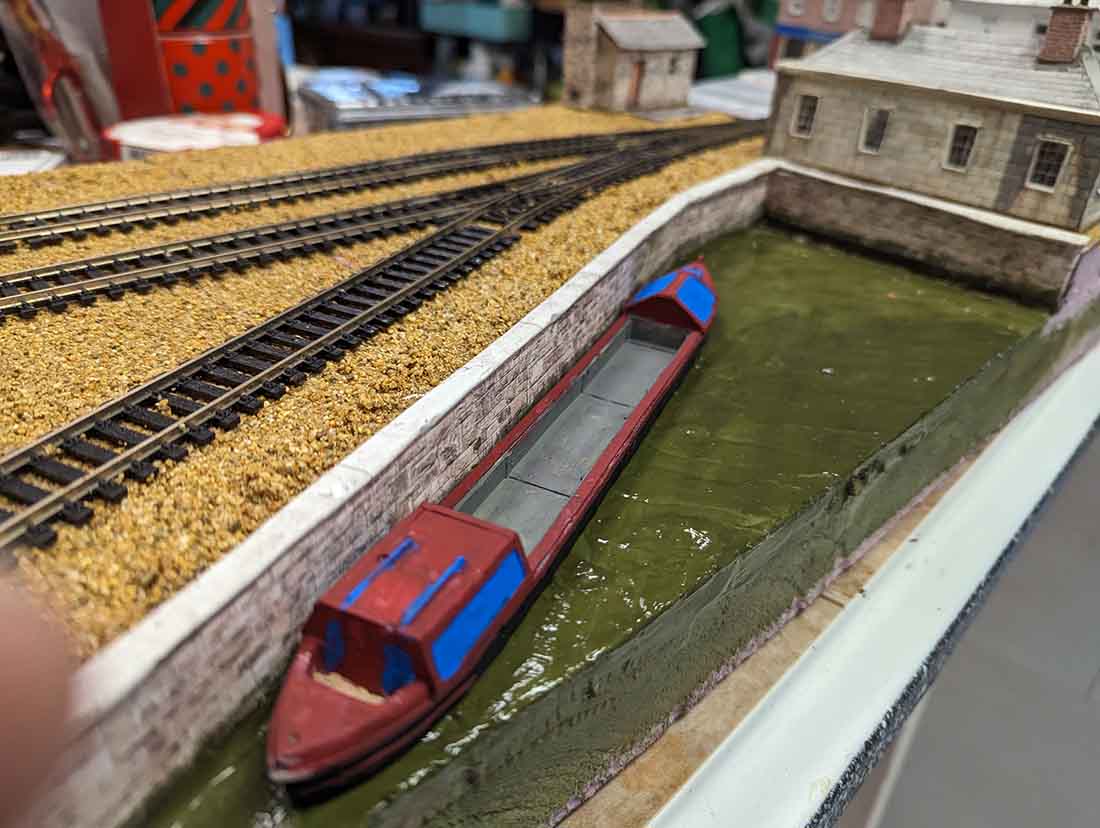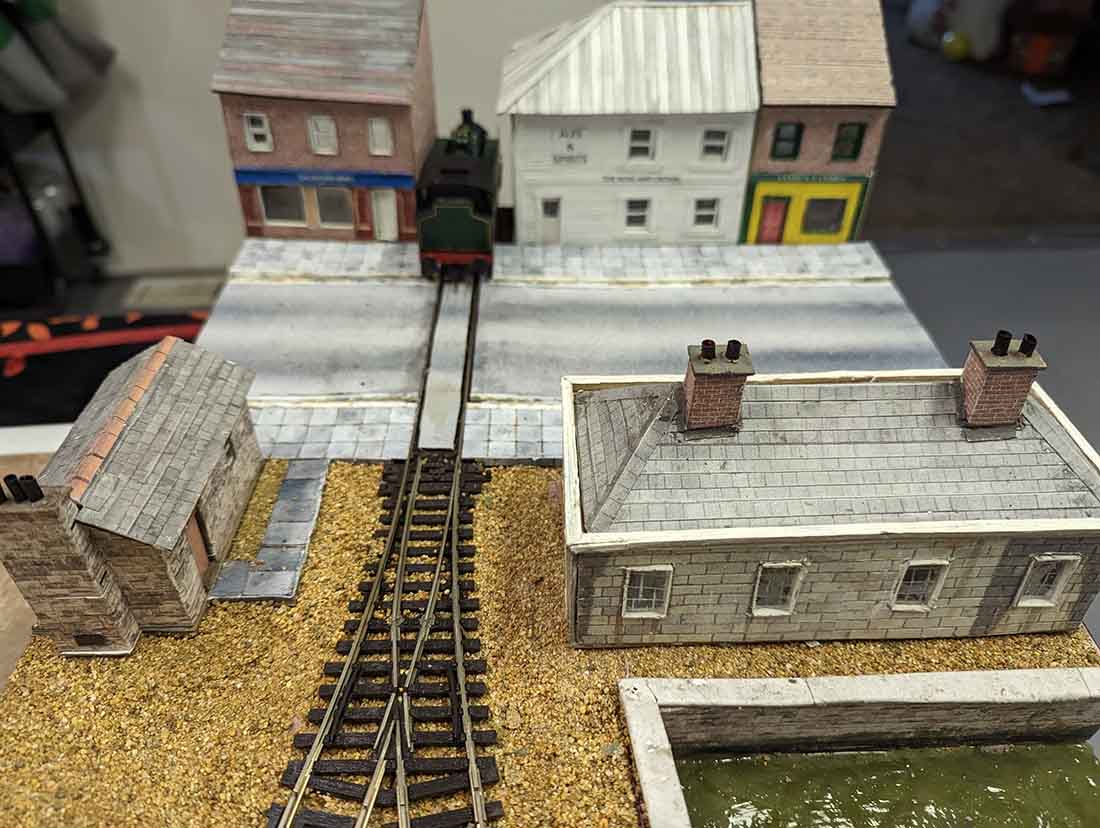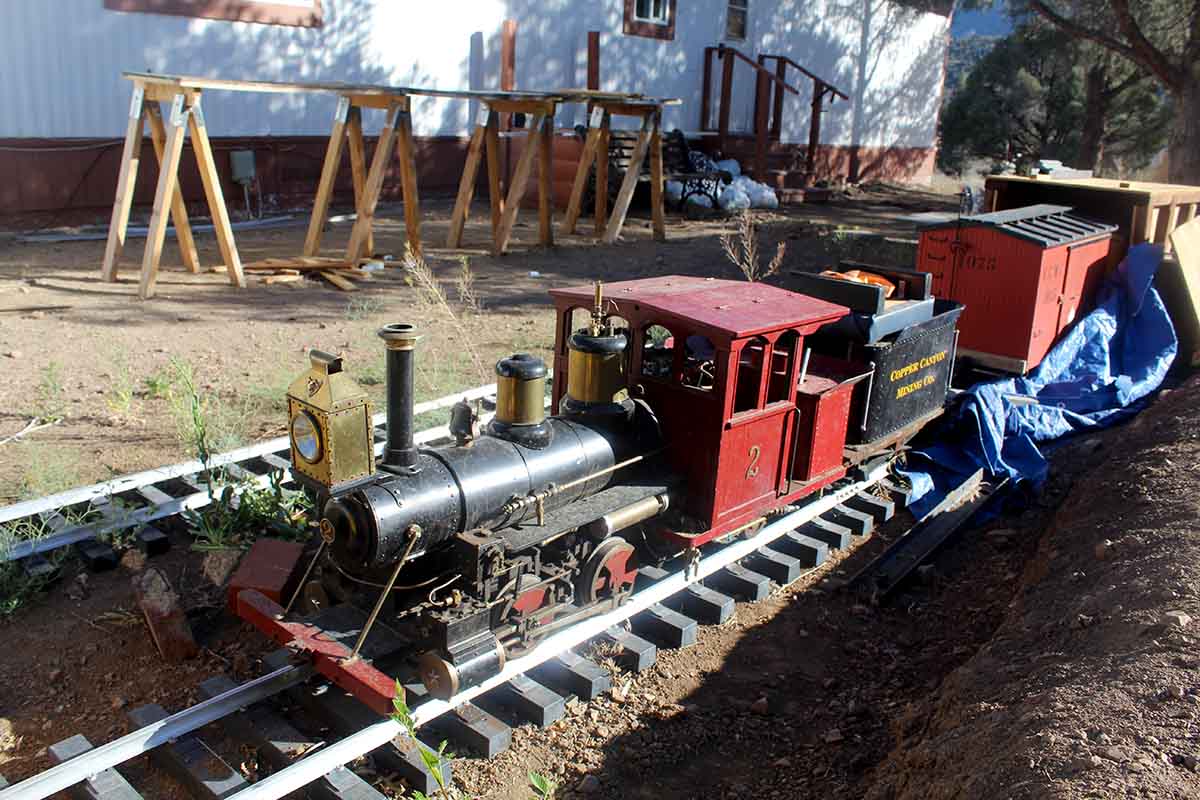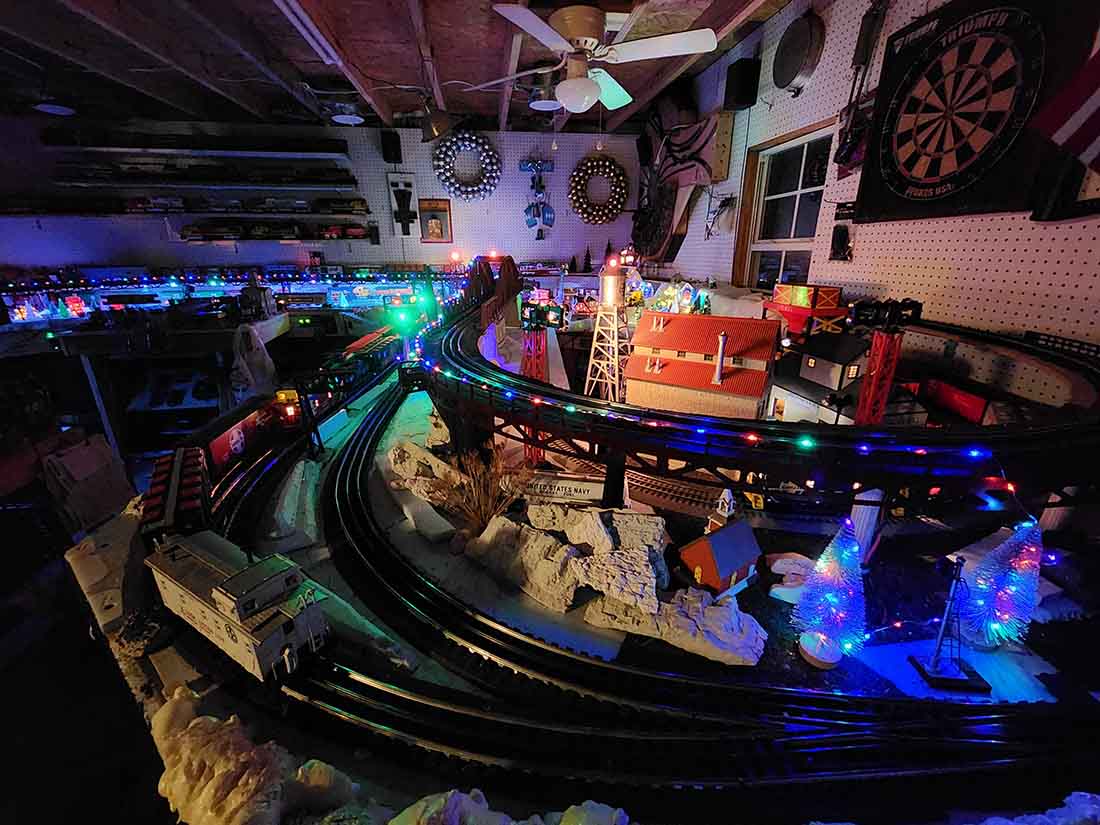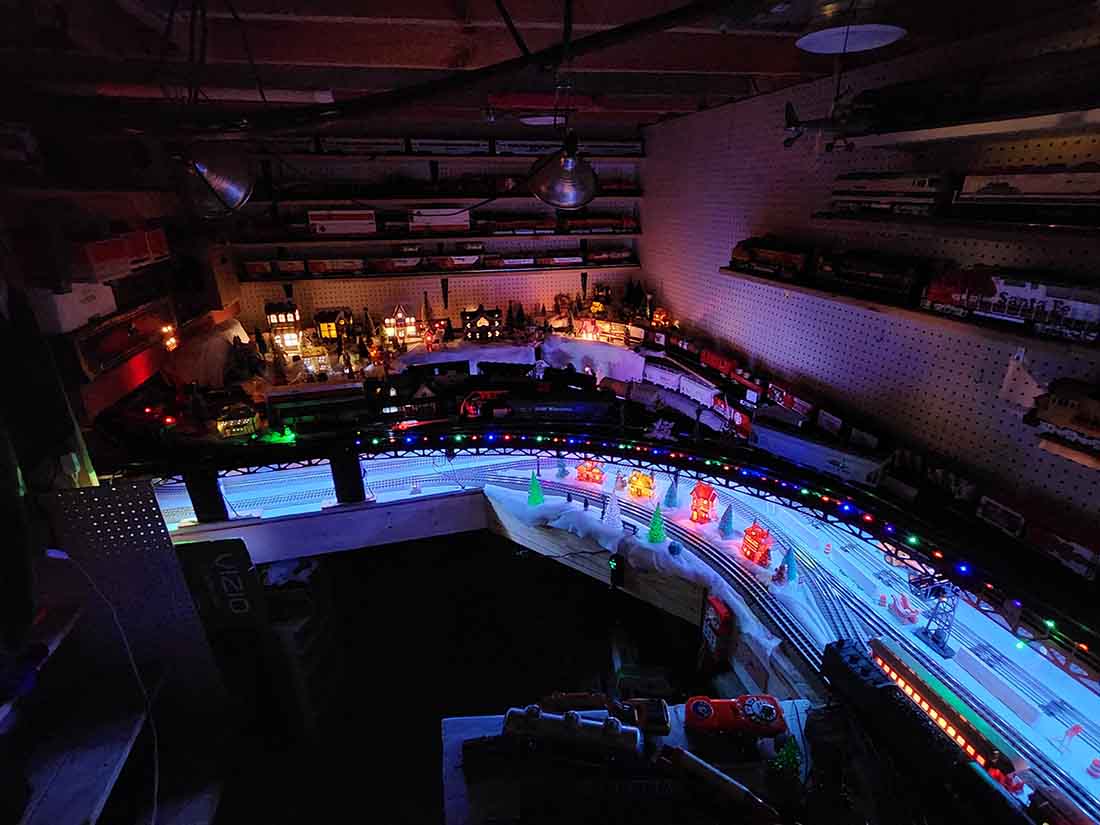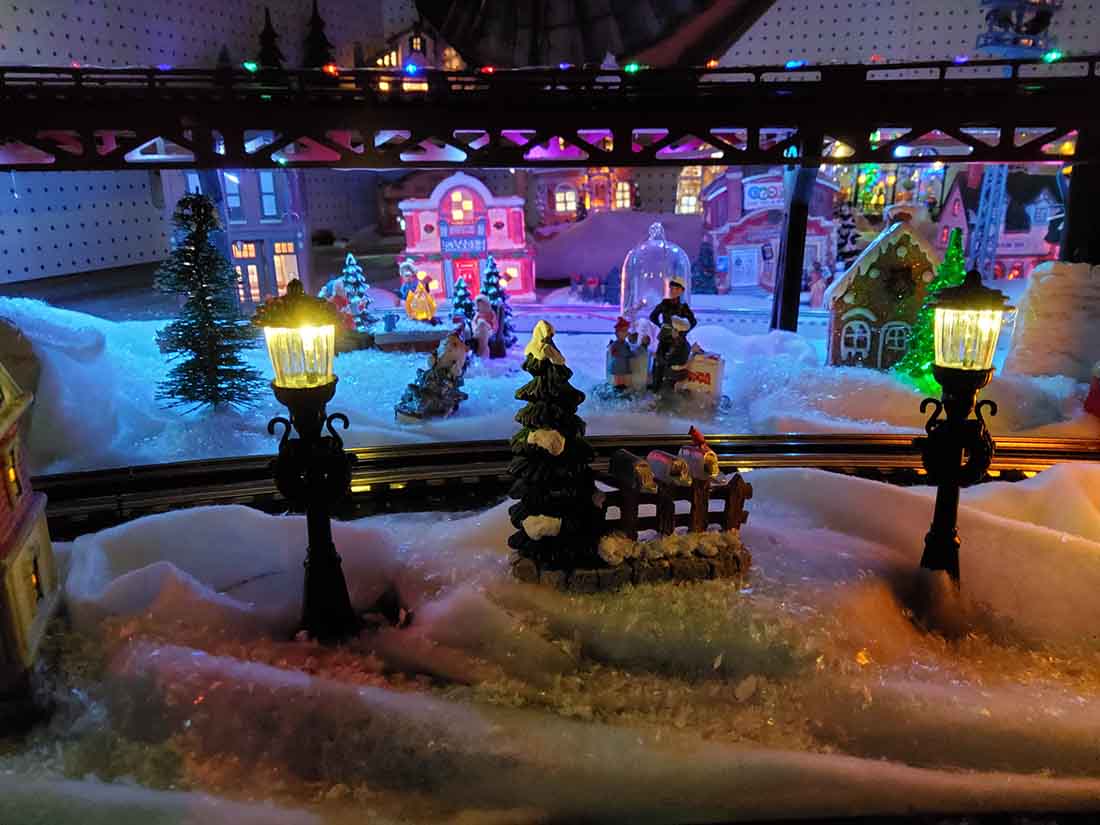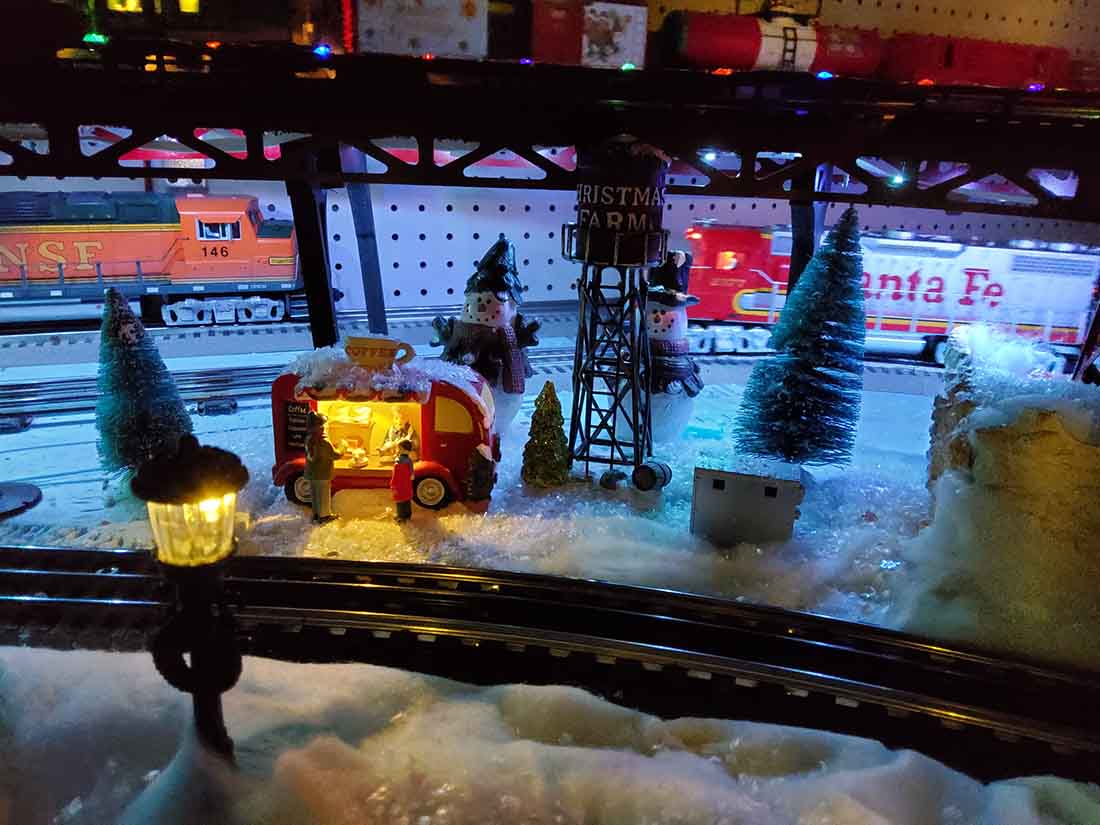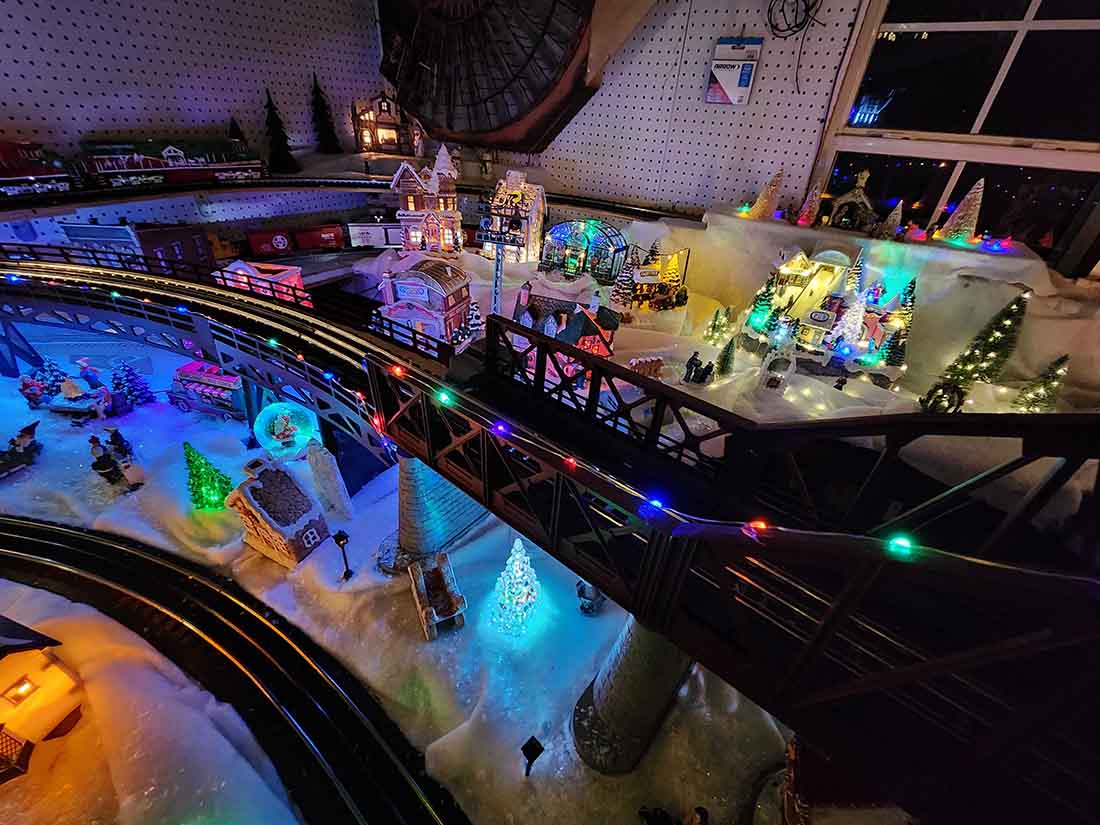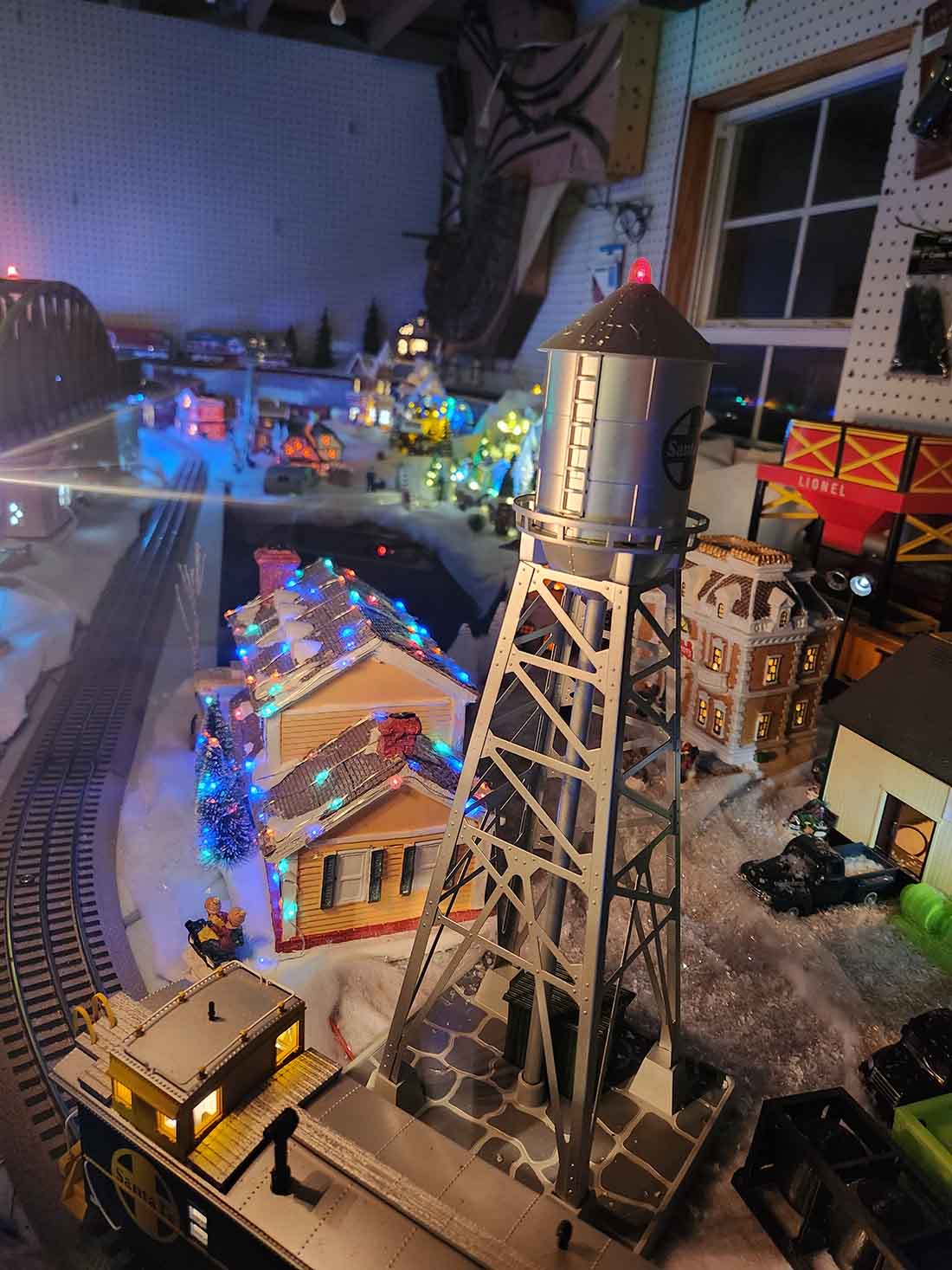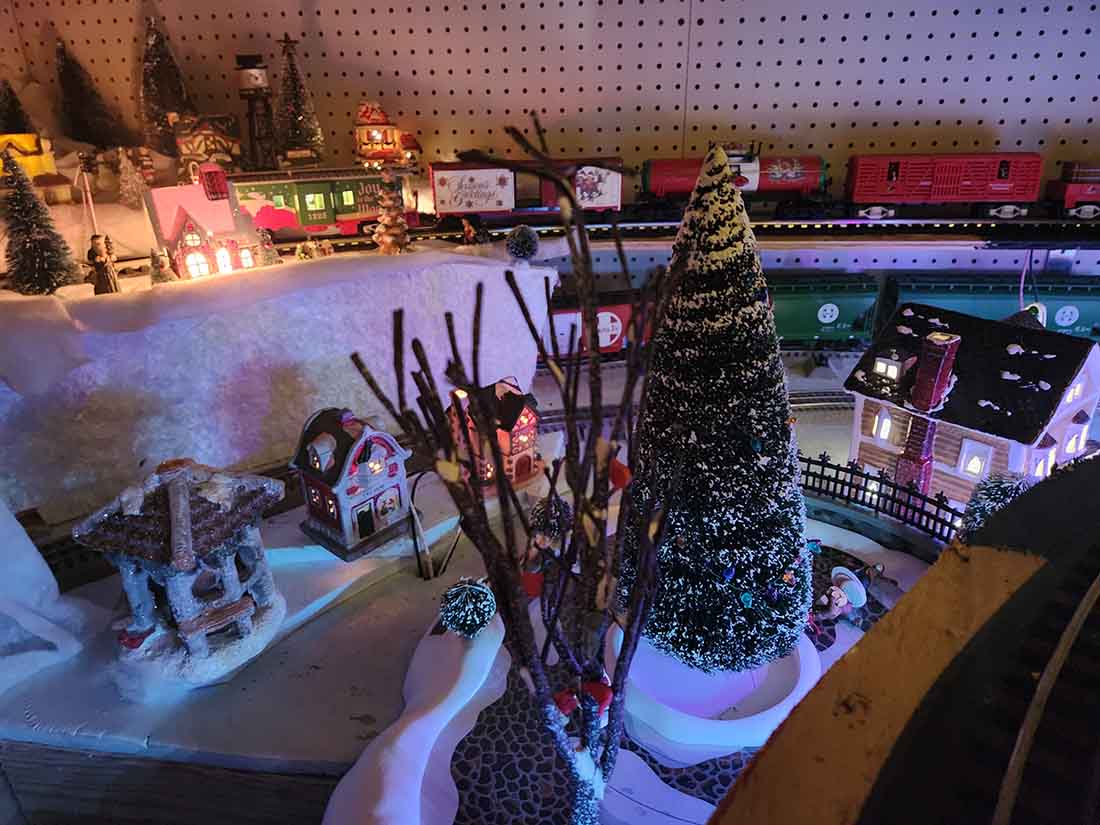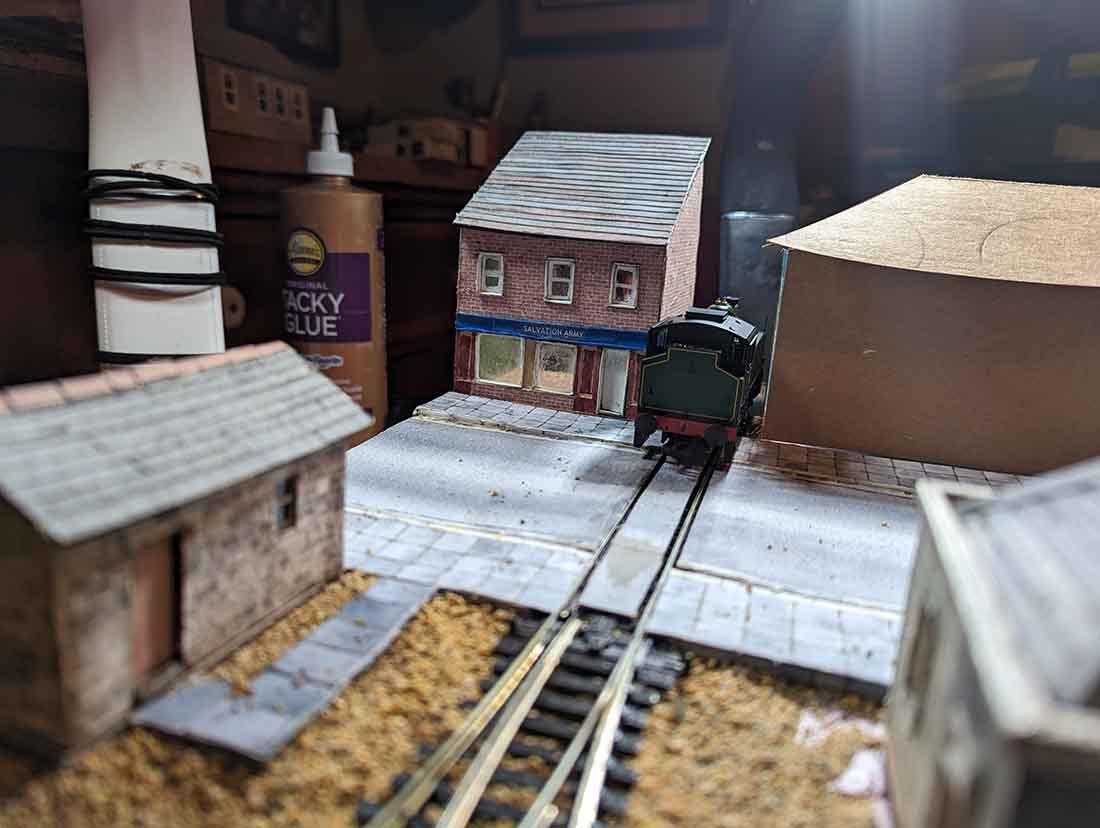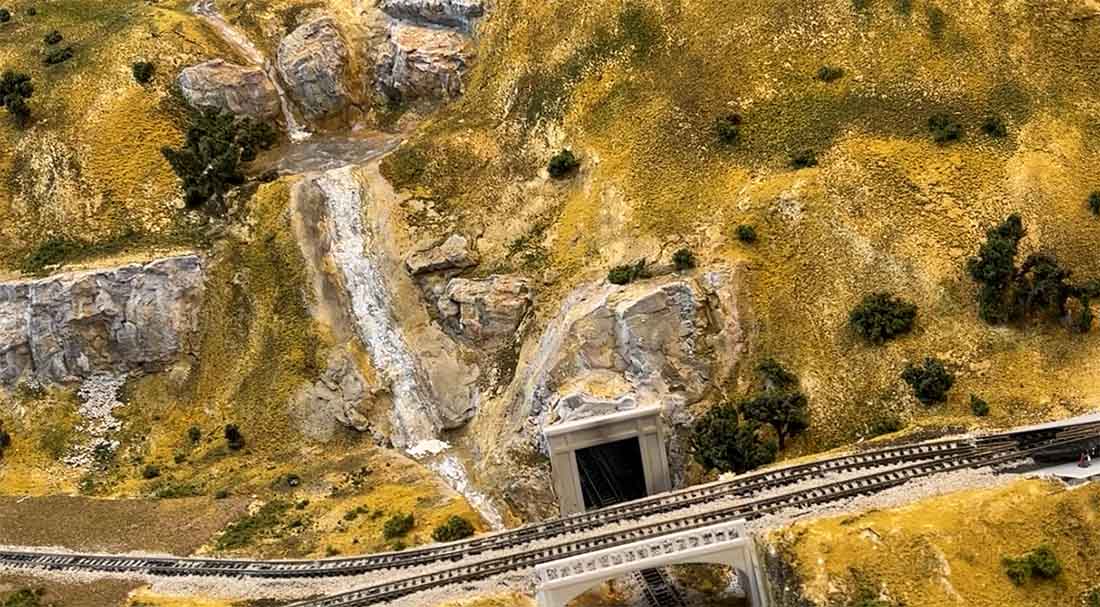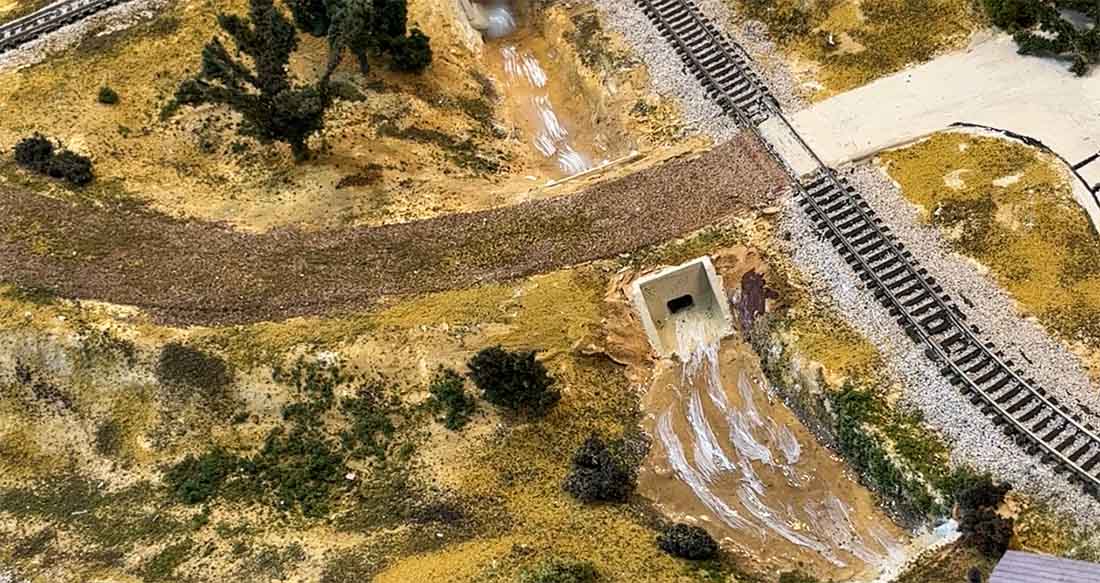John’s been back in touch with an upate on his small space HO train layout.
And as usual, he’s having fun:
“Hello Al
I have now completed the street scene portion of my latest modeling adventure.
I still need to get some figures from Hattons and maybe an auto or two.
I mentioned that I would provide a narrative about this project so I will give it a go.
For years I have been space and budget limited. To compensate I began building small layouts appropriate to the space I had available.
While I live “across the pond” in America, I found that certain British publications were far more helpful when it came to model railroading in small spaces than our native Model Railroader and Railroad Model Craftsman.
Model Trains International was most inspirational and I wish I could collect every issue.
About seven or eight years ago I discovered Model Rail and when they came out with their bespoke USA tank engine I had to get one. Of course a Gronk followed and then an Ivatt 2-6-0.
The addiction is getting worse. I just acquired an Austerity 0-6-0 tank and I am waiting on the arrival of a J-70 and a Sentinel.
Wagons and vans have also been collected and I am now trying to focus on the 1950’s to late 1960’s time frame. English English is slowly becoming my third language.
With the acquisition of British railway equipment, a layout is now in order. While I have a couple of projects under consideration, a small Inglenook with a dock for a canal narrow boat is where I have decided to start.
I was especially inspired by a photo of a locomotive threading it’s way between a pub and another structure. This looked like a unique way to exit the layout to reach the fiddle track.
While I very much enjoy what I have accomplished so far, this I a learning experience and I am already finding things that I will do differently on my next effort.
All the best,
John
Nevada, USA”
A big thanks to John.
Whenever he gets in touch I always think of his narrow gauge layout that looks like an absolute blast.
Here’s a pic of it with a link: Small gauge railroad
And here’s the youtube of it in action. Looks great fun:
And now on to Carol.
Although Christmas either feels like a distant memory or speeding towards you at an alarming rate, I thought this okay to post because it’s another good example of a small space HO train layout:
“Hi Al,
Over the years, I’ve truly enjoyed and learned a lot from your daily posts. I thought I would send you a couple of photos from my annual Christmas HO layout.
I put it up every year, starting at the end of November and it stays up though February. Each year I try to add or do something a little different.
This year I built my mountain & tunnel from a block of hard foam,using a hot wire/knife to carve out the center and mold the mountain.
I used the helpful tips from past postings from you and the other subscribers. Thanks!!
There are over 250 people, which really make the town look alive and my board is lit up at night.
One of my favorite items, of which I’m very proud of, is my working band stand. I’ve used small speakers hooked up to a mixer and a iPod to provide sound.
I call my layout Hansenville (named by a good friend of ours).
Thanks and keep the posts coming!!!!
Carol”
It’s always good to read when the blog helps others make a start on their layout, so I’m very much looking forward to seeing what the year brings.
That’s all for today folks.
Please do keep ’em coming.
And if today is the day you join in the fun, the Beginner’s Guide is here.
Best
Al
PS Latest ebay cheat sheet is here.
